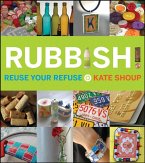Structured in three actionable sections, the guide progresses from decluttering psychology to spatial design hacks and sustainable habit-building. It applies interior design principles to small spaces, offering DIY shelving diagrams and modular storage solutions, while grounding advice in data-like the Ellen MacArthur Foundation's findings on textile waste. Unlike rigid minimalist guides, it advocates adaptable systems, acknowledging diverse budgets and lifestyles through thrift-store sourcing tips and community clothing swaps. A chapter on seasonal rotations compares wardrobe curation to "editing a magazine," ensuring versatility without excess.
What sets this book apart is its interdisciplinary approach, weaving behavioral science (like overcoming "just in case" hoarding) with eco-design ethics. Case studies from professional organizers and reflective exercises, such as a 30-day decluttering challenge, make sustainability tangible. By framing closets as mirrors of broader life goals-authenticity, environmental stewardship-it transforms organization from a chore into a creative, purposeful act.
Dieser Download kann aus rechtlichen Gründen nur mit Rechnungsadresse in A, B, BG, CY, CZ, D, DK, EW, E, FIN, F, GR, H, IRL, I, LT, L, LR, M, NL, PL, P, R, S, SLO, SK ausgeliefert werden.









